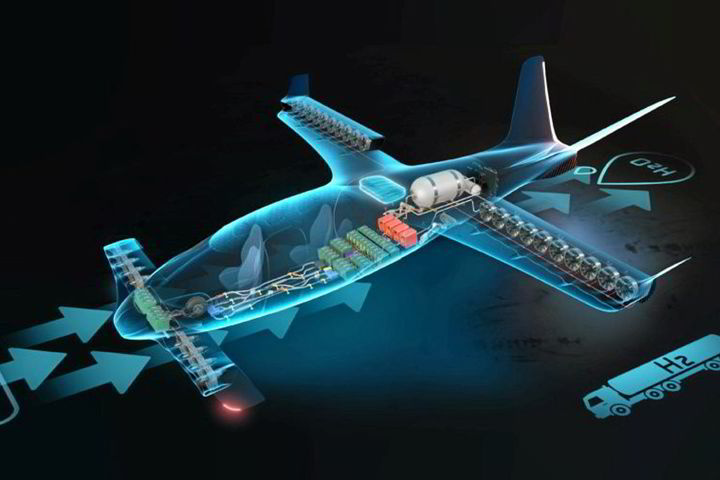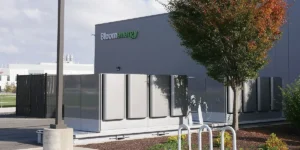‘Formula 1 engineering’ | Swiss start-up unveils futuristic hydrogen-powered passenger aircraft

A futuristic liquid-hydrogen-powered passenger aircraft that has been designed in collaboration with BMW and a major Formula 1 engineering firm, has been unveiled by Swiss start-up Sirius Aviation, which promises a flying range close to 2,000km without refuelling.
Sirius has designed two versions of the electric vertical take-off and landing (e-VTOL) aircraft, the three-seater “Business Jet” and the five-seater “Millennium Jet” have an advertised range of 1,850km and 1,046km respectively.
First flights have been promised in 2025 — the same year several aviation firms have pledged to begin commercial hydrogen-powered flights on regional aircraft able to carry around 15-20 passengers — and the start-up plans to begin commercial operations in the EU and/or Americas from 2030.
As well as BMW’s design house BMW Designworks, which has several VTOL designs under its belt, Formula One engineering firm Sauber Group also collaborated on the Sirius Jet.
No details have been revealed about the size of the fuel cell, although Sirius has said it will unveil the hydrogen propulsion system at a ceremony in Switzerland next Wednesday (17 January).
Liquid hydrogen has most likely been chosen for the aircraft design because it requires much less space than gaseous hydrogen.
Article continues below the advert
Compressed hydrogen at 350 or 750 bar contains 0.8kWh or 1.1kWh of energy per litre, respectively. Liquefaction increases the volumetric energy density to more than 2.3kWh/litre.
This means that a fuel tank containing liquid hydrogen would contain about two to three times more energy — and therefore range — than a similar-sized tank containing compressed H2.
This comes with a significantly higher cost — especially as the hydrogen is expensive to begin with compared to battery-electric power — due to the expense of liquefaction.
However, cost might not be a huge concern for potential users, as the aircraft seem to be aimed at users of private jets, while are hardly known for their low costs.
Even so, battery-electric e-VTOLs have a significantly shorter range, with US manufacturer Odys offering a range of just 40-96km, while fellow start-up Zuri promises a range of more than 700km for its luxury model.
But some are also sceptical of the future utility of VTOL aircraft — of which the most well-known is the helicopter — to decarbonise aviation. They require less space to take off, however this is offset by the fact that they are typically smaller, with a shorter range.
Enginemaker Rolls-Royce last year ditched its e-VTOL programme as part of a major restructuring.
Sirius Aviation is not the only company looking at hydrogen to decarbonise flight — major commercial aircraft designer Airbus hopes to have the first of its ZeroE liquid hydrogen fuel-cell-powered aircrafts in the air by 2035, while Easyjet is teaming up with Rolls-Royce to develop an H2-powered jet engine.
ZeroAvia and Universal Hydrogen are also trialling hydrogen fuel cell-powered regional aircraft, while last year a German aviation firm claimed to have carried out the world’s first liquid-hydrogen-powered piloted test flight.





